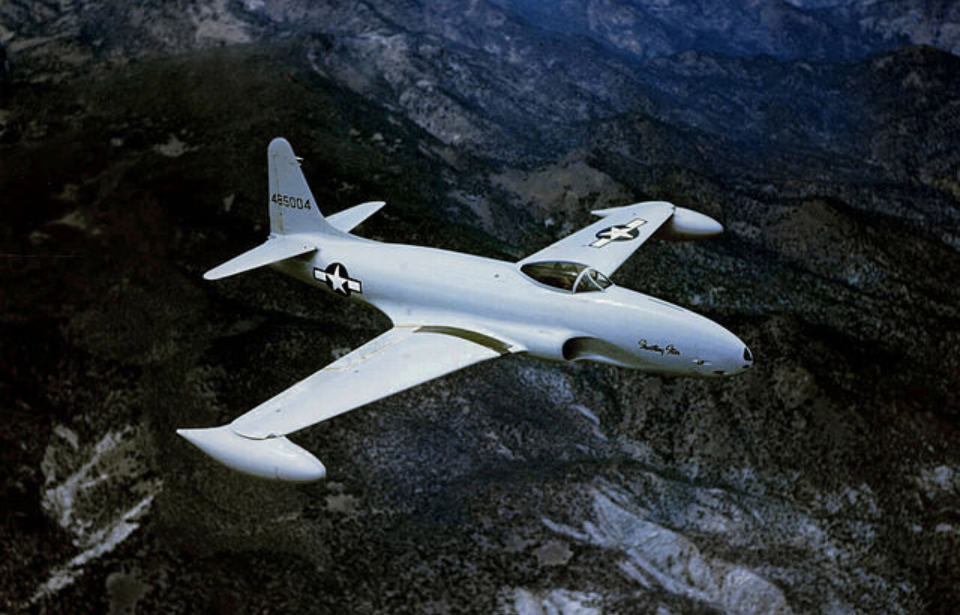The Lockheed P-80 Shooting Star, also known as the F-80, is notable as the first operational jet fighter flown by the US Army Air Forces (USAAF). While discussions on World War II-era aviation technology frequently emphasize German jet aircraft, the P-80 made a significant impact, playing a crucial role in influencing advancements in the years that followed.
Development of jet technology during World War II
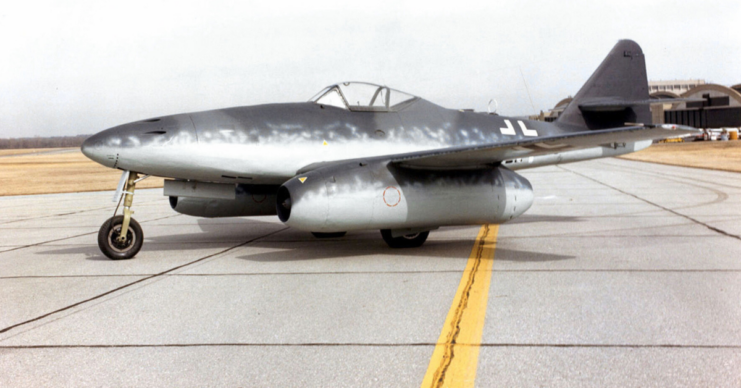
When examining high-tech aircraft from WWII, German designs like the Heinkel He 162 Volksjäger, Messerschmitt Me 262 and Heinkel He 163 Komet usually come to mind. However, the Allies weren’t far behind in developing jet technology.
The British invented the first turbojet engine, created by Royal Air Force (RAF) officer Frank Whittle in 1930. Whittle’s invention led to the development of the Gloster E.28/39, the first Allied jet engine aircraft, which flew in 1941. The first American jet fighter, the Bell P-59 Airacomet, entered service in October 1942.
While 66 were built, the P-59 wasn’t used in an operational capacity, as it lacked the necessary components to make it effective in battle. It couldn’t even keep up with the newest piston-powered fighters. The RAF found it to be inferior to the Gloster Meteor, so the American jet fighter was, instead, used to train pilots.
Closing the gap
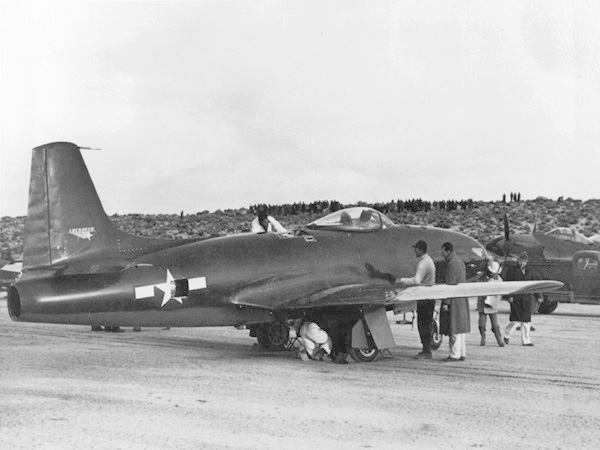
Recognizing the need to catch up with British and German advancements, the United States initiated the development of the P-80 Shooting Star. Crafted by Lockheed, it stood as the sole Allied jet during WWII to have its engine mounted within the fuselage.
The impetus for the P-80’s creation stemmed from the Allies’ awareness of the Messerschmitt Me 262, discovered in spring 1943. The US opted to leverage existing British jet research, fitting the aircraft with the Halford H-1B Goblin engine to endow the P-80 with performance capabilities matching the Me 262.
The P-80’s development began in May 1943 – without the engine, as it wasn’t yet available from the United Kingdom. Lockheed’s Chief Engineer Kelly Johnson assembled a team of engineers and issued a mandate: develop a new aircraft prototype for the USAAF with utmost secrecy. They worked diligently, putting in six 10-hour days a week, aiming to complete the new jet fighter within 150 days.
The Skunk Works team successfully produced the first prototype – the XP-80 Lulu-Belle – in early 1944, after 141 days of intensive work. Propelled by the British H-1B engine, Lulu-Belle took its inaugural flight on January 8 of that year and, in subsequent tests, exceeded 500 MPH at an altitude of over 20,000 feet. This achievement marked it as the first USAAF turbojet aircraft to surpass that speed in level flight
Following the first flight, Johnson remarked, “It was a magnificent demonstration, our plane was a success – such a complete success that it had overcome the temporary advantage the Germans had gained from years of preliminary development on jet planes.” This success prompted the development of additional prototypes.
Lockheed P-80 Shooting Star specs
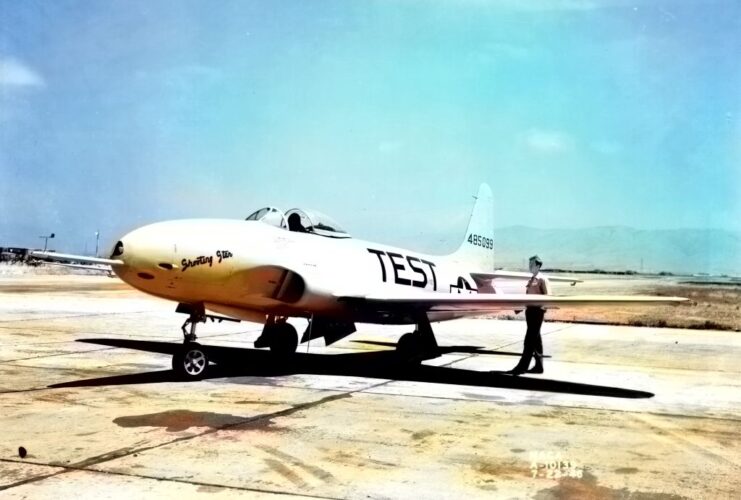
The development of the P-80 Shooting Star prioritized the fuselage, to ensure a proper center of gravity. Its cockpit was equipped with a bubble canopy, affording pilots an unobstructed view. As production increased, the British engine used in the prototype was replaced with an internally fitted Allison J33-A-35 engine capable of generating 4,600 pounds of dry thrust. This enabled the aircraft to attain speeds of Mach 0.76 and maintain a range of 825 miles.
The single-seater P-80 was armed with a range of weapons. Its primary armament consisted of six .50 AN-M3 Browning machine guns located in the nose, while secondary support was provided by eight High-Velocity Aerial Rockets (HVAR) and two 1,000-pound bombs affixed to hardpoints on the wings and specially designed rails. Due to the jet’s compact size, additional weapons or munitions were initially unable to be mounted.
Flying secret missions over Italy
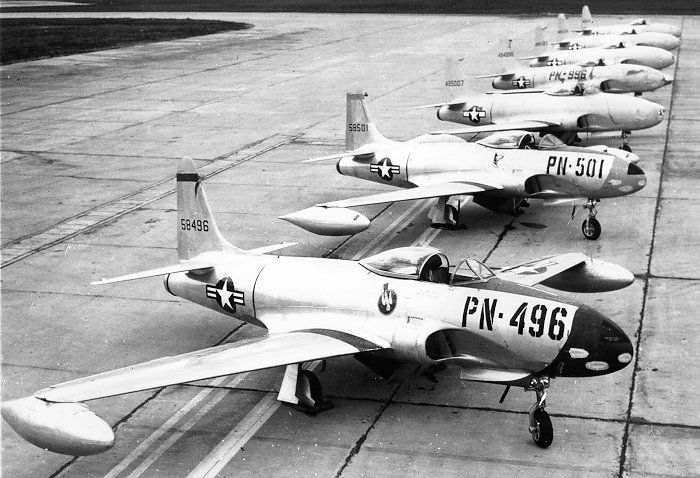
The USAAF was eager to get the P-80 Shooting Star into the war, potentially even seeing combat against the German Me 262. A small unit comprised of just four pre-production YP-80As was dispatched to Europe: two went to the UK for demonstration and familiarization flights, while the others were sent to Italy to join the 1st Fighter Group at Lesina Airfield.
In Italy, the YP-80As faced an interesting situation. The Luftwaffe was already using its own jet aircraft on the Italian Front, with Arado Ar 234B Blitz reconnaissance jets running missions over Allied lines. These couldn’t be intercepted by conventional Allied aircraft. The YP-80A had the potential to change the situation.
Officially, a YP-80A attached to the 94th Fighter Squadron flew two operational sorties in Italy. The details of these missions remain unknown, but they were recorded as non-combat. While the plan had been for the aircraft to be more involved in the conflict, a delay in production prevented this from occurring.
Death of Richard Bong
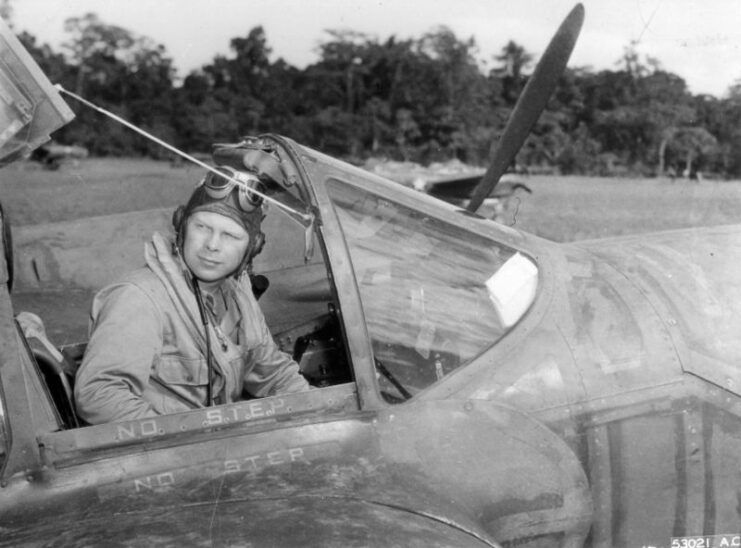
Maj. Richard Bong was the leading American flying ace of the Second World War, serving in the Pacific Theater. Achieving his first kill in December 1942 and adding four more the following summer, he earned a promotion to the rank of captain. By the conflict’s conclusion, he’d surpassed renowned World War I ace Eddie Rickenbacker, accumulating a total of 40 credited kills.
Following his service with the USAAF, Bong became a test pilot. On August 6, 1945, he took flight in a P-80 Shooting Star, which promptly encountered a malfunction in its primary fuel pump. Bong didn’t activate the auxiliary fuel pump, and when he tried to eject from the aircraft, he was too close to the ground, resulting in a tragic fatality.
Lockheed P-80 Shooting Star’s post-war service
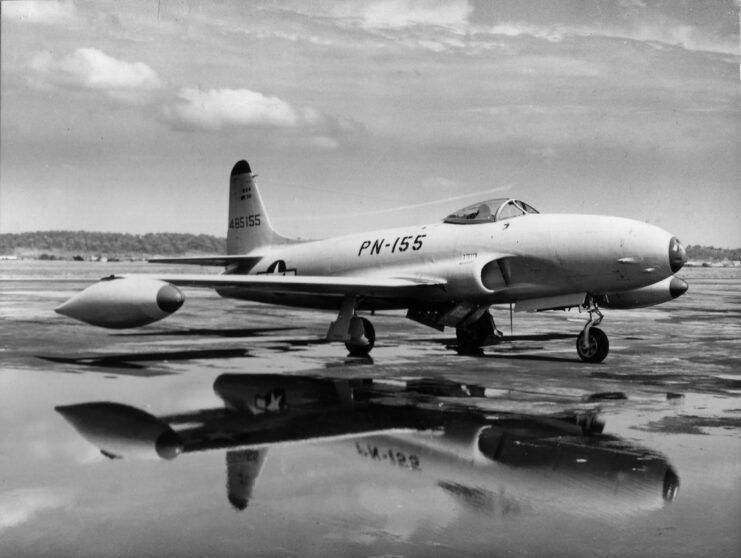
Following WWII, the P-80 Shooting Star continued its service in diverse capacities, notably as a fighter-bomber in Korea under the designation F-80. Some units of the P-80A were supplied to the US Navy, undergoing modifications for deployment aboard the USS Franklin D. Roosevelt (CVB/CVA/CV-42).
With production exceeding 1,700 units, the P-80 underwent various upgrades and transformations, eventually transitioning into the T-33 trainer. This version served in numerous air forces globally, totaling 6,557 produced units by 1959.
Beyond its operational roles, the P-80 left a lasting mark on aviation history by achieving several records. On June 19, 1947, a P-80R, piloted by Col. Albert Boyd, set the world speed record at 623.73 MPH. Additionally, the aircraft played a pivotal role in the advancement of aerial refueling, becoming the first jet to successfully undergo mid-flight refueling in a combat scenario.
Deployment of the Lockheed F-80 Shooting Star
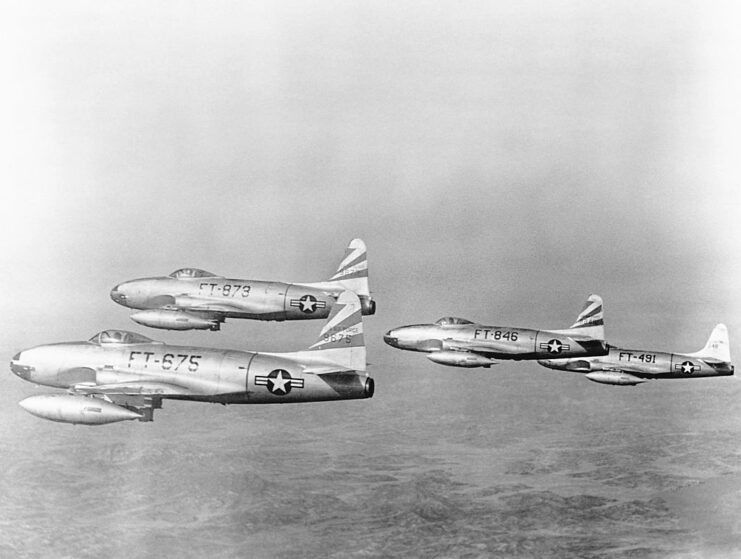
The most well-known variant of the P-80 Shooting Star was the F-80. Intended to be a high-altitude interceptor, it took on a number of roles throughout the Korean War, including as a photo reconnaissance aircraft (RF-80), a day fighter and a fighter-bomber. It notably flew combat sorties against North Korean-flown Mikoyan-Gurevich MiG-15s, as well as against Ilyushin Il-10 ground attack aircraft and Yakovlev Yak-9 fighters.
Most notably, the F-80C secured the first American jet-versus-jet kill during a dogfight against enemy MiG-15s on November 8, 1950, with pilot Lt. Russell Brown in the cockpit. An estimated 75 percent of enemy losses during the first months of the conflict were attributed to the aircraft. That being said, 368 were lost, the majority to ground fire.
Given its WWII-era origins, the F-80 was slower than anticipated. This eventually led to the North American F-86 Sabre taking over the aircraft’s combat role in Korea.
Lockheed P-80 Shooting Star’s legacy
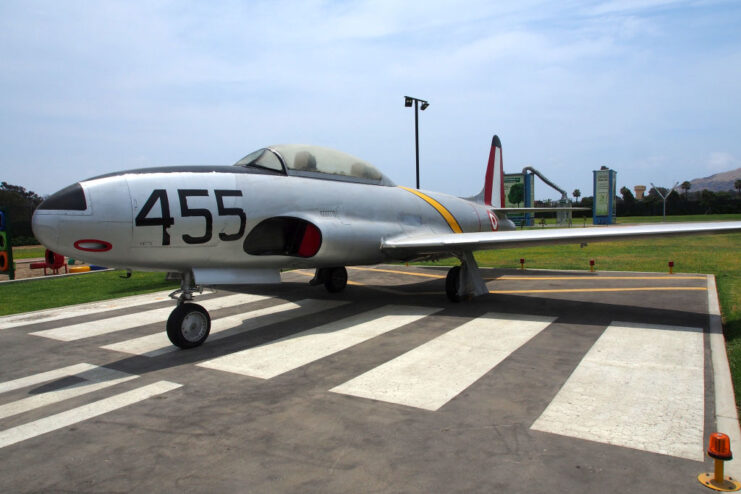
The P-80 Shooting Star played a pivotal role in the advancement of jet aviation in the US and helped shape the future of jet fighters. Although it didn’t see extensive service during WWII, its impact on the development of jet technology was significant. The P-80 demonstrated the potential of jet-powered aircraft and paved the way for the more advanced designs that followed in the coming years, such as the F-86 Sabre and MiG-15.
Want War History Online‘s content sent directly to your inbox? Sign up for our newsletter here!
The aircraft’s development and eventual operational use demonstrated America’s commitment to advancing aviation technology and ensuring air superiority. The P-80 may not be as famous as its contemporaries, but its contributions to jet aviation and the post-war era should not be overlooked.
